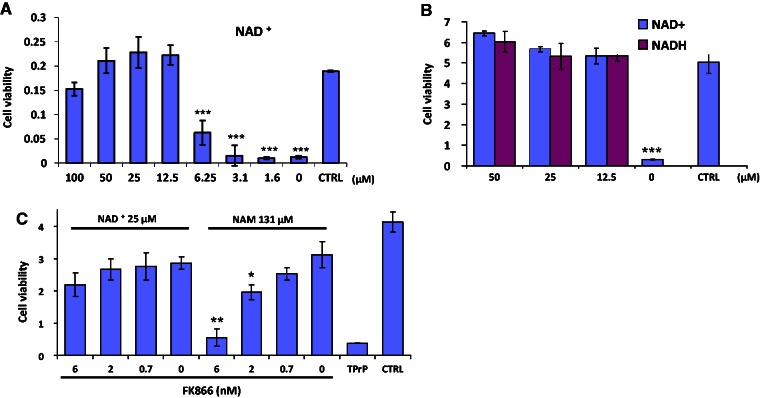Figure 2.
NAD+ rescues TPrP-damaged neuroblastoma cells. (A) Dose-response of NAD+ rescue of neuroblastoma cells from TPrP toxicity. Statistical differences are shown compared to untreated control (CTRL). The experiment was done three times in octaplicate wells; standard deviations are shown. (B) Both the oxidized (NAD+) and the reduced (NADH) forms of the metabolite rescue neuroblastoma cells from TPrP death. Statistical differences are shown compared to CTRL. The experiment was done three times in triplicate wells; standard deviations are shown. (C) FK866, an inhibitor of the enzyme nicotinamide phosphoribosyltransferase (NAMPT) that regulates the rate-limiting step of the nicotinamide to NAD+ synthesis pathway, abolishes nicotinamide, but not NAD+ rescue, in a dose-dependent manner. Statistical differences in NAD+ or nicotinamide-treated samples are shown compared to 0 NAD+ or 0 nicotinamide, respectively, in the presence of FK866. The experiment was done twice in triplicate wells; standard deviations are shown. Cells were exposed to 2.5 µg/ml TPrP (A and C) or 5 µg/ml TPrP (B) for 5 days. NAD+ or NADH was added at the indicated doses on Day 3 until Day 6, when cell viability was assessed. *P < 0.05; **P < 0.01; ***P < 0.001.

